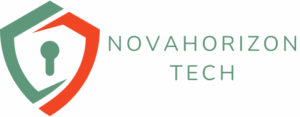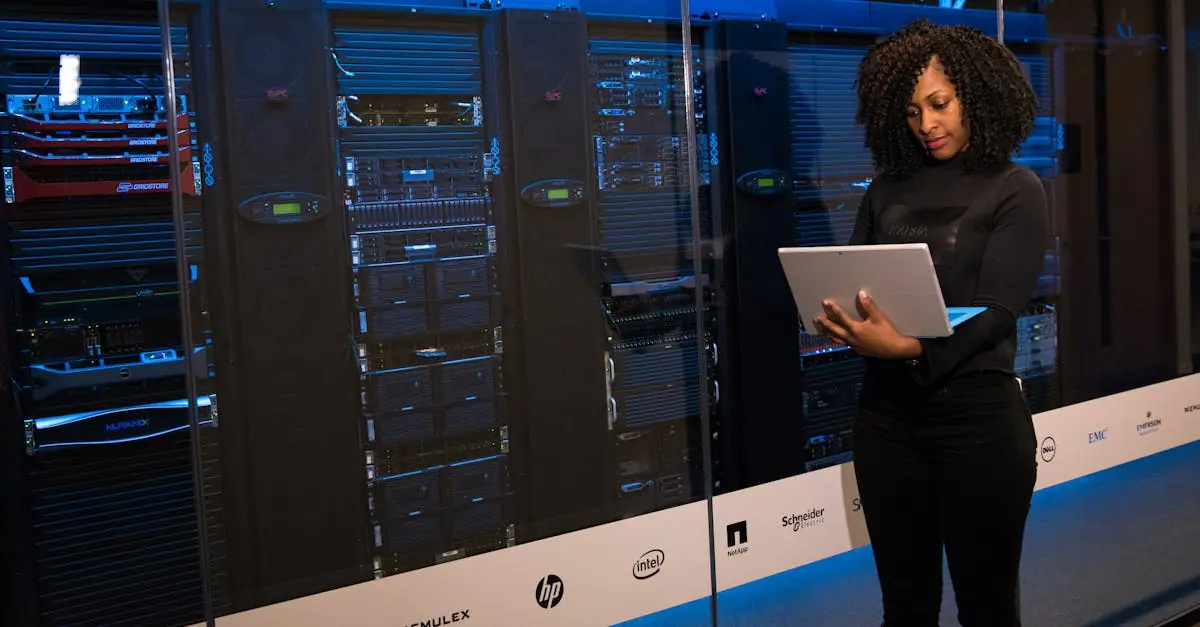In a world where every click could lead to a digital disaster, cybersecurity solutions are the unsung heroes of the internet. Picture this: your personal data is like a prized pie cooling on a windowsill, and cybercriminals are the hungry raccoons just waiting for a chance to snatch it away. But fear not! With the right cybersecurity measures in place, you can keep those pesky raccoons at bay and enjoy your pie in peace.
From firewalls that act like bouncers at an exclusive club to encryption methods that turn your sensitive info into an unbreakable code, the arsenal of cybersecurity solutions is both impressive and essential. In this article, we’ll explore the top strategies to protect your digital life, ensuring that your data stays safe and sound while you surf the web with confidence. After all, who wants to be the next headline in a cybercrime story?
Table of Contents
ToggleOverview of Cybersecurity Solutions
Various cybersecurity solutions play a crucial role in protecting personal and organizational data. Understanding their significance fosters safer online experiences.
Importance of Cybersecurity
Cybersecurity safeguards sensitive information from unauthorized access and cyber threats. It ensures confidentiality, integrity, and availability of data across digital platforms. Effective cybersecurity measures prevent data breaches, which can result in financial loss and reputational damage. Organizations investing in cybersecurity solutions demonstrate responsibility towards their stakeholders. Data protection laws increasingly require businesses to adopt robust security frameworks, underscoring the necessity of compliance. Consistent vigilance against cyber risks minimizes potential vulnerabilities, enhancing user trust and confidence.
Current Trends in Cybersecurity
Cybersecurity trends evolve to address emerging threats. Artificial intelligence strengthens threat detection and response capabilities. Cloud security, crucial for protecting data stored online, continues to gain traction as more organizations migrate to cloud solutions. Zero trust architecture, which emphasizes strict user verification, becomes vital in minimizing exposure to attacks. Additionally, the rise of remote work increases demand for secure access solutions. Cybersecurity training for employees also garners attention as human error often contributes to data breaches. Staying informed on these trends enables organizations to proactively defend against cyber threats.
Types of Cybersecurity Solutions
Various cybersecurity solutions protect sensitive data from cyber threats. Understanding these different types empowers organizations to strengthen their defenses.
Network Security Solutions
Network security solutions focus on protecting internal networks from unauthorized access and attacks. Firewalls, which monitor and control incoming and outgoing network traffic, serve as a primary defense mechanism. Intrusion detection systems (IDS) analyze network traffic for suspicious activities, while intrusion prevention systems (IPS) actively block threats. Additionally, virtual private networks (VPNs) encrypt internet connections, safeguarding data transferred over public networks. Implementing these solutions ensures a robust security framework, protecting the organization’s entire network infrastructure from potential breaches.
Endpoint Security Solutions
Endpoint security solutions protect individual devices connected to a network. Antivirus software detects and removes malware, acting as the first line of defense. Advanced threat protection tools monitor for unusual behavior on endpoints and can mitigate risks before they escalate. Mobile device management (MDM) ensures that mobile devices comply with security policies. Regular updates and patches strengthen security by addressing vulnerabilities. By securing endpoints, organizations minimize risks and protect sensitive data on devices frequently targeted by cybercriminals.
Application Security Solutions
Application security solutions safeguard software applications from vulnerabilities. Secure coding practices prevent insecure coding, reducing the risk of exploitation. Regular security testing identifies weaknesses in applications, allowing developers to rectify them before deployment. Web application firewalls (WAF) filter and monitor HTTP traffic to and from a web application, providing additional protection. Incorporating security measures into the software development life cycle promotes a proactive approach. By addressing application vulnerabilities, organizations can ensure user data remains secure against potential attacks.
Leading Cybersecurity Solutions Providers
Various companies offer advanced cybersecurity solutions to safeguard data effectively. Their unique features cater to different organizational needs.
Company A: Overview and Features
Company A provides a comprehensive suite of cybersecurity tools designed for enterprise-level protection. Their solutions include advanced threat detection, machine learning algorithms, and continuous monitoring services. Notably, they offer strong encryption for sensitive data and vulnerability assessments that regularly evaluate security posture. Their user-friendly dashboard helps IT teams manage incidents efficiently while minimizing downtime. With a focus on compliance, Company A ensures that organizations meet regulatory standards effortlessly.
Company B: Overview and Features
Company B specializes in endpoint protection with innovative solutions tailored for small to medium-sized businesses. They emphasize real-time threat detection, using behavioral analytics to identify anomalies quickly. Additionally, their cloud-based management platform allows for easy deployment across diverse environments. Users benefit from automated updates and a responsive support team dedicated to addressing concerns promptly. Regular security training resources further empower employees to recognize phishing attempts and secure their devices effectively.
Company C: Overview and Features
Company C offers robust application security solutions aimed at developers and software companies. Their platform integrates seamlessly with development workflows, promoting secure coding practices. Features include dynamic application security testing, which identifies vulnerabilities during production. Routine assessments provide ongoing security monitoring, ensuring applications remain safe from emerging threats. Company C’s emphasis on collaboration between security and development teams fosters a proactive approach to safeguarding software applications.
Best Practices for Implementing Cybersecurity Solutions
Effective implementation of cybersecurity solutions involves strategic approaches to minimize risks and enhance organizational resilience against threats.
Risk Assessment Strategies
Identify vulnerabilities to understand the organization’s risk profile. Conduct regular assessments to evaluate potential threats and weaknesses in systems. Use tools like penetration testing and vulnerability scanning to uncover hidden issues. Prioritize the identified risks based on potential impact and likelihood. Establish a mitigation plan to address the highest risks first. Update risk assessments periodically to reflect changes in the threat landscape. Continuous monitoring helps organizations adapt swiftly to emerging challenges.
Employee Training and Awareness
Educate employees on cybersecurity best practices from day one. Regular training sessions should cover topics like phishing, password management, and secure data handling. Encourage staff to report suspicious activities and reinforce their role in security. Utilize interactive training tools and simulations to enhance engagement and retention. Foster a security-first culture where employees feel empowered to act as the first line of defense. Assess training effectiveness through quizzes or hands-on activities to ensure comprehension and application of concepts.
Future of Cybersecurity Solutions
The future of cybersecurity solutions leans heavily on innovation and adaptability. Emerging technologies play a pivotal role in enhancing security measures.
Emerging Technologies
Artificial intelligence drives significant advancements in threat detection and response. Machine learning algorithms analyze patterns to identify potential cyber threats swiftly. Blockchain technology strengthens data integrity through decentralized and tamper-resistant records. Additionally, quantum computing presents new frontiers, offering robust encryption methods that could render traditional encryption obsolete. These technologies collectively elevate security protocols, enabling organizations to respond effectively to evolving cyber threats.
Predictions for the Industry
Experts forecast a surge in cybersecurity investment as organizations prioritize data protection. Increased regulatory scrutiny pushes businesses to adopt comprehensive security frameworks. Cybersecurity-as-a-Service gains traction, allowing companies to outsource security needs efficiently. Furthermore, the adoption of zero trust architecture is expected to rise, emphasizing strict identity verification and access controls. Proactive measures will dominate, with a shift towards continuous monitoring and threat hunting to combat sophisticated cybercriminals.
Investing in robust cybersecurity solutions is vital for any organization aiming to protect sensitive data. As cyber threats evolve organizations must adapt by embracing innovative technologies and implementing comprehensive security measures. The importance of continuous monitoring and employee training cannot be overstated as they form the backbone of an effective cybersecurity strategy.
By prioritizing cybersecurity organizations not only safeguard their data but also build trust with stakeholders. As the landscape of cyber threats changes staying informed and proactive will be key to maintaining a strong defense. Embracing a security-first culture will empower employees to contribute to the organization’s overall resilience against cybercrime.




